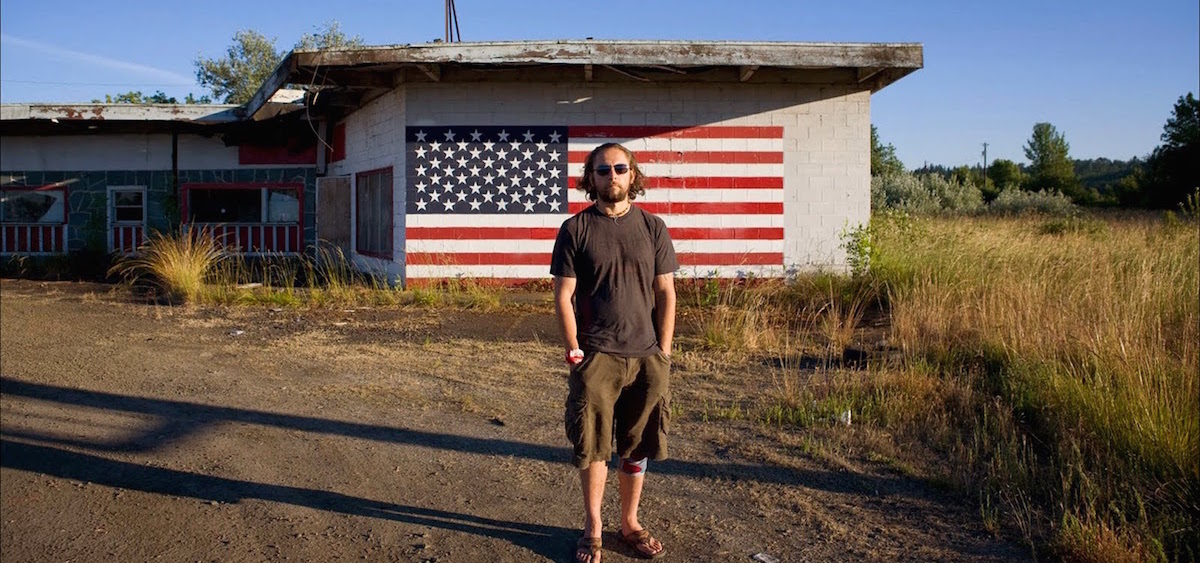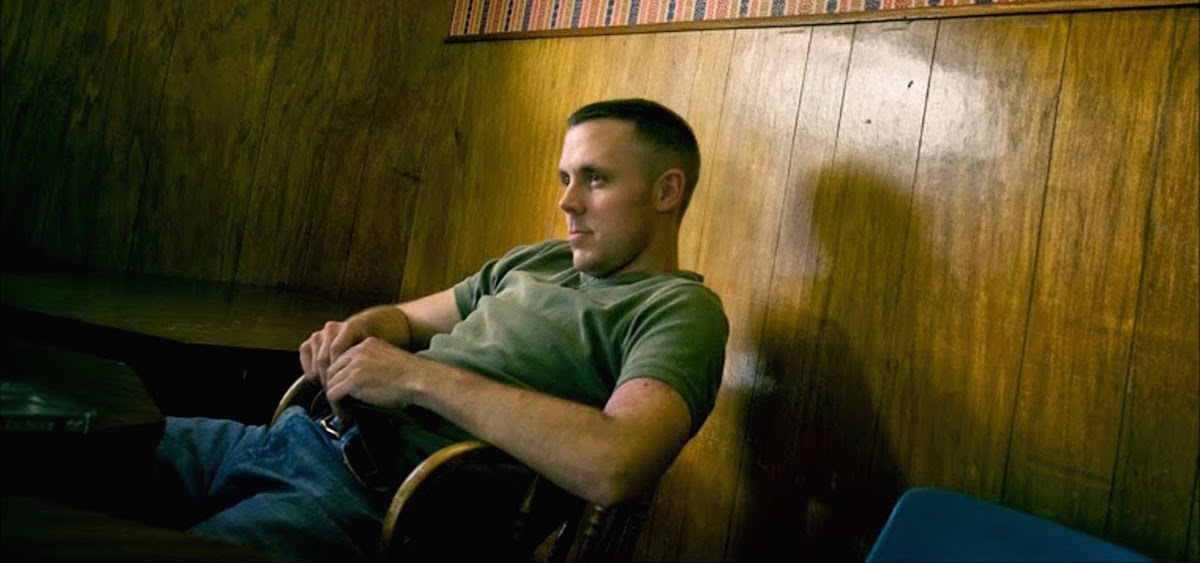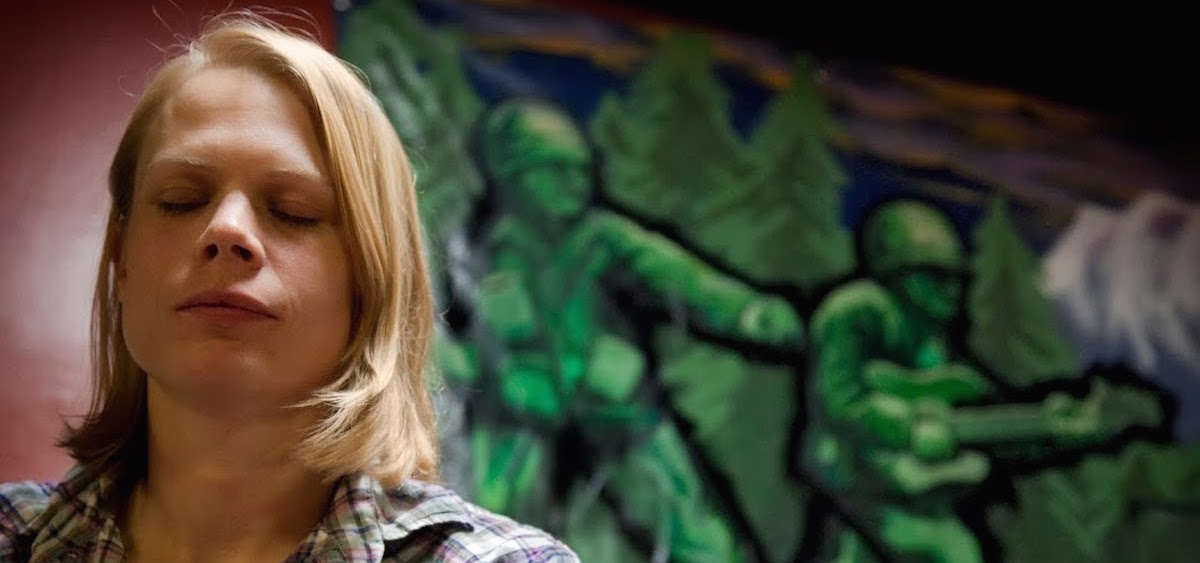Culture

Veterans Share Stories in “Exit Wounds” Exhibit, Book
By: Kelly Fisher
Posted on:
Last week, the Ohio University Multicultural Center Gallery was filled with portraits and photos of military men and women. Some conjured happy memories, while others illustrated the difficulties some veterans face upon returning home.
Since 2007, Jim Lommasson, a photographer, journalist and oral historian, has conducted extensive interviews with veterans of the Iraq and Afghanistan wars. Although he originally intended for his project to be about soldiers’ homecomings, Exit Wounds, a book and traveling exhibit, soon shed light on war experiences, too.
The book is a compilation of 50 interviews, though Lommasson interviewed around 100 soldiers. After his publisher narrowed it down to 50, the stories that did not make the cut stuck with Lommasson, whether they revolved around military experiences or the soldiers’ lives before service, some involving personal traumas, mental illness or abuse. That kept the project specifically revolving around military life.
Lommasson interviewed male and female veterans of all rank and branches and traveled across the country to meet with them. He refused to “cherry pick” who he spoke with and avoided the same list of questions so the conversations could take a more natural course.
Eventually, the veterans began to offer up their personal photos, sparking the idea for the exhibit.
“We, in America, tend to forget that military are humans as well,” said David W. Edwards Sr., director of the Veterans and Military Student Services Center at Ohio University. “We do have feelings and emotions, and for those that come back from a traumatic experience, it’s also difficult to understand and deal with those emotions. I’m not saying everybody does that, but there’s a process that people go through. Some people go through it easier and better than others, and some people really struggle with what they have seen and done.”

Speaking along those lines, Lommasson said part of the reason he started the Exit Wounds project was to get the soldiers’ stories heard because “we all have preconceived notions about who the soldiers are.” He also cited a statistic that states that during WWII, nearly everyone in America knew a soldier in combat; today, however, only about three percent of Americans know a soldier.
“In the past, we’ve confused the war with the warrior,” he said. “Most of the (veterans), at a certain point, realize they were sacrificing everything for a war we probably shouldn’t be in. Many of the (veterans) came back and were extremely radicalized by their experience. They defy all stereotypes.”
Nukhet Sandal, director of the War and Peace Studies program at Ohio University, thought, “it would be a great idea to bring (Lommasson) to our campus since his work touches upon very critical issues, and would create interdisciplinary conversation on veterans.”
Sandal reached out to Edwards and Winsome Chunnu-Brayda, strategic director for Diversity and Inclusion and Multicultural Programs at Ohio University, to collaborate in bringing Lommasson to OU.
“I looked at (the exhibit) and I found it interesting, so I thought this would be a great opportunity for us to display the work, and we have a lot of (veterans) in the Athens community,” Chunnu-Brayda said.

The exhibit was displayed in the multicultural center from Nov. 2 to Nov. 11, Veterans Day.
Chunnu-Brayda said that based on feedback, it was a significant learning experience for many attendees, and although some of the photos brought back “disturbing” memories for some, many veterans offered positive feedback.
“(There were) a lot of fun pictures that evoke some very happy thoughts and feelings, and then of course the other ones,” said Edwards, an Air Force veteran. “The unfortunateness of war and what that brings out or brings up to the surface I guess, but not often talked about.”
Edwards said some veterans saw the exhibit as “solemn” and took in all of the sights and emotions. He also observed that students who met with Lommasson, particularly the 45 to 50 who attended a presentation in Tupper Hall last Monday, were very engaged in Lommasson’s stories.
Next, the exhibit will be on display in Oregon. And for the first time, it will be displayed with Lommasson’s other ongoing project, What We Carried, about Iraqi refugees and the things they chose to bring with them when they left their homes.
Like Exit Wounds, What We Carried is a traveling exhibit and will also have a book of interviews published, both in English and Arabic.
One woman, he remembered, only brought two things: a photograph of her family and her Quran. One young girl showed Lommasson something she couldn’t part with: her plastic box full of Barbie dolls.
“If you and I were refugees, in two weeks we would look just like they did. We would be dirty, we’d look ragged, we’d be tired and hungry and desperate,” Lommasson said. “Exit Wounds and What We Carried are not opposing stories. A number of the (veterans) that I talked to wanted to go back, not as soldiers, but as NGOs to help rebuild Iraq. When we think we know who the soldiers are, we’re usually pretty wrong.”
For more information about Exit Wounds, visit http://lifeafterwar-soldiersstories.blogspot.com/.

